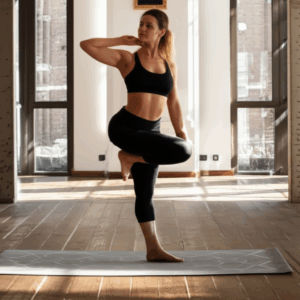Pregnancy is a transformative journey, encompassing profound physical and emotional changes. Amidst this evolution, prenatal yoga emerges as a powerful practice, not only supporting the physiological demands of a growing body but also profoundly “rewiring” the mind for greater resilience, calm, and connection. By integrating mindful movement, controlled breathing, and intentional relaxation, pregnancy yoga equips expectant mothers with invaluable tools for a healthier, more balanced experience.
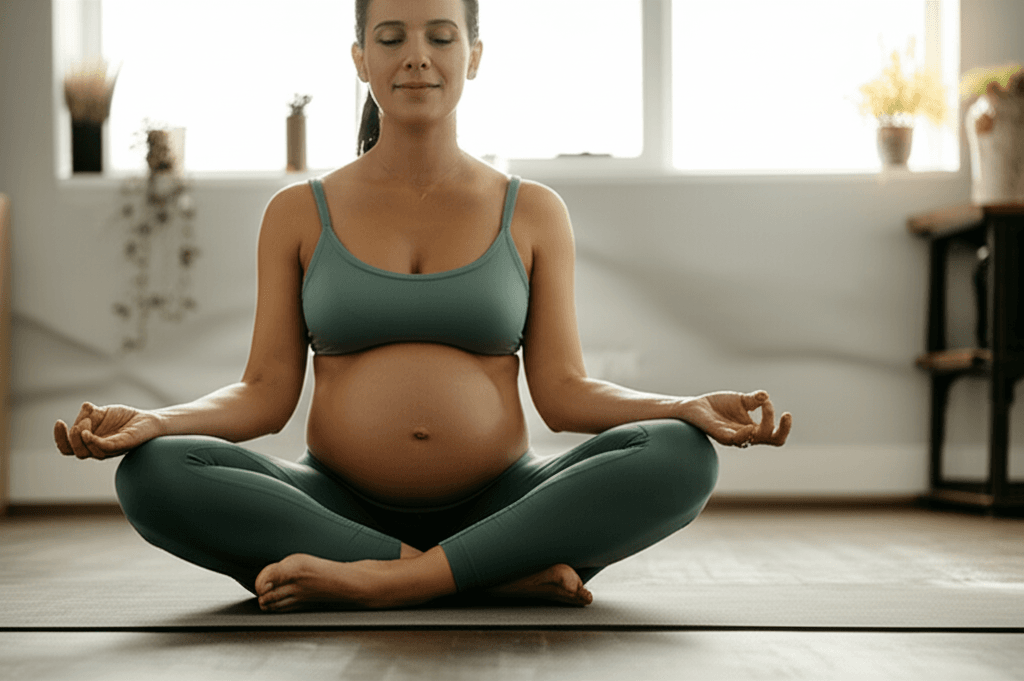
When to Begin Your Pregnancy Yoga Journey
Determining the ideal time to commence prenatal yoga largely depends on individual comfort and previous yoga experience, but general guidelines exist to ensure safety and maximise benefits. The consensus among experts suggests that the second trimester (from week 14 onward) is typically the most suitable period to start a dedicated prenatal yoga practice.
During the first trimester, the body undergoes significant hormonal shifts and adjustments, often accompanied by fatigue and nausea. Due to a higher risk of miscarriage in this initial phase, it is generally recommended to avoid intense physical exercises. However, for those who are already experienced yogis, continuing a gentle practice may be permissible, provided they listen intently to their bodies and do not push themselves. Even in the first trimester, light stretching and gentle breathing exercises can be beneficial. It is paramount to consult with a healthcare provider or obstetrician before beginning any new exercise regimen, including prenatal yoga.
As pregnancy progresses into the third trimester, the practice of yoga can safely continue right up until birth, though the focus should shift towards more supportive and restorative poses to accommodate balance challenges and prepare for labor.
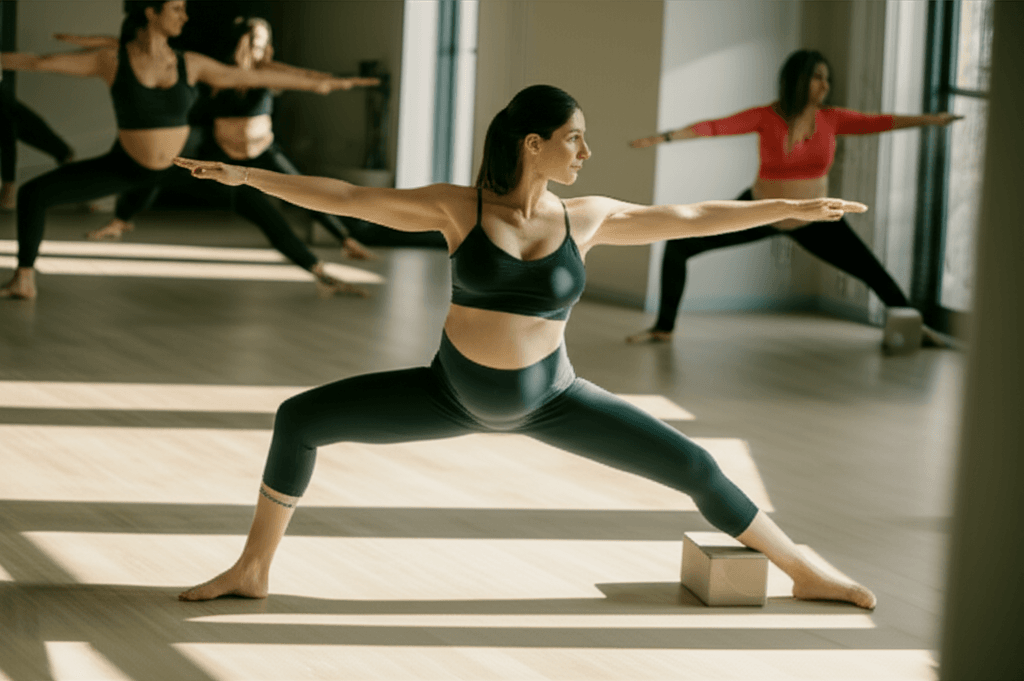
When to Exercise Caution and What to Avoid
While pregnancy yoga offers numerous benefits, certain modifications and avoidances are crucial to ensure the safety of both mother and baby. The body’s ligaments and joints become more flexible during pregnancy due to the hormone relaxin, increasing the risk of overstretching and injury.
Throughout Pregnancy, with specific emphasis on trimesters:
- First Trimester: Intense physical exercises, difficult poses requiring significant balance, and movements that put direct pressure on the abdominal area should be avoided. This includes intense backbends, deep twists, forceful abdominal contractions, and inversions (unless under the direct supervision of an experienced prenatal instructor for seasoned practitioners). Jumping, hopping, or bouncing movements are also best avoided.
- After the First Trimester (or as the belly grows):
- Lying on the Stomach: Poses that require lying flat on the stomach should be avoided completely.
- Lying Flat on the Back: After approximately 16 to 20 weeks, lying flat on the back for extended periods can compress the vena cava, a major blood vessel, potentially restricting blood flow to both mother and baby. Use props like wedges or pillows to elevate the upper body or practice on your side.
- Deep Backbends: These can put excessive pressure on the spine and should be avoided due to increased joint flexibility.
- Sudden Changes in Direction: Rapid transitions can lead to loss of balance as your center of gravity shifts.
- Challenging Stretching Movements: While flexibility increases, overstretching can cause injury. Focus on gentle, mobilising stretches rather than deep, extreme ones.
- Deep Twists: Twists that compress the abdominal area are generally not recommended. Open twists, where the twist originates from the shoulders and keeps the belly open, may be acceptable later in pregnancy with caution and a doctor’s approval.
- Forceful Abdominal Contractions: Poses that heavily engage or contract the abdominal muscles, such as Boat Pose or certain variations of Half Lord of the Fishes (Ardha Matsyendrasana), should be avoided.
- Hot Yoga: Practices in heated rooms should be skipped due to the risk of overheating and dehydration.
- Certain Breathwork (Pranayama): Avoid forceful or fast breathing techniques like Kapalabhati, as well as breath retention, which can reduce oxygen availability. Instead, focus on slow, deep diaphragmatic breathing.
- Balance Poses: As the pregnancy progresses, balance can become compromised. Use a wall, chair, or other props for support during standing balancing poses.
Always listen to your body. If you experience any discomfort, pain, dizziness, nausea, headache, unusual vaginal discharge, or shortness of breath, stop exercising immediately and consult your healthcare provider.
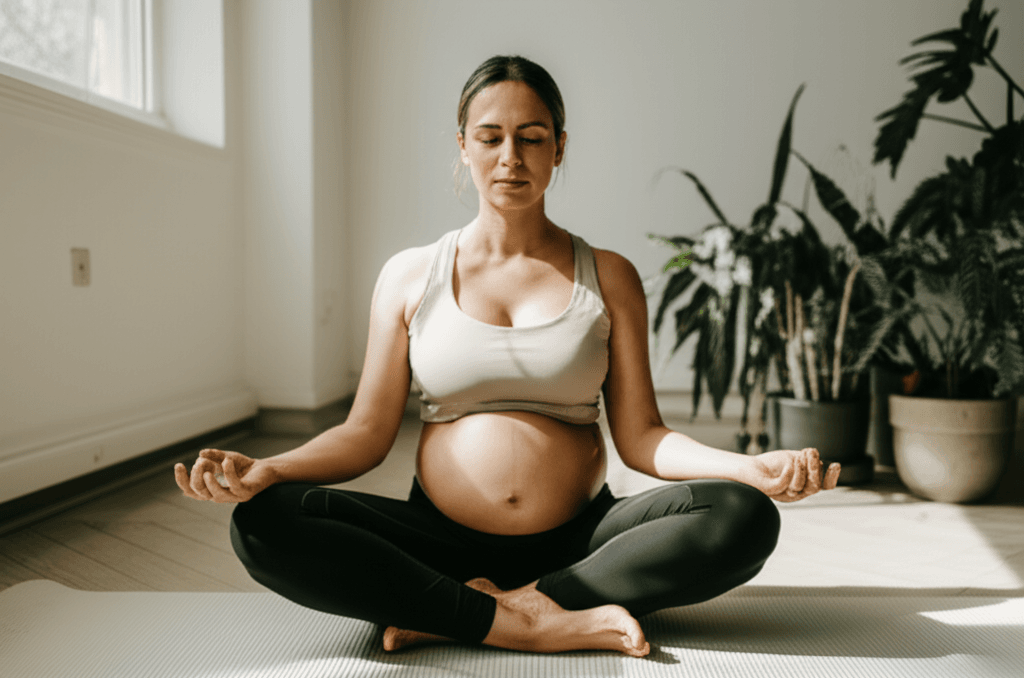
An Ideal Pregnancy Yoga Routine for Mind and Body
An ideal pregnancy yoga routine is designed to be gentle, supportive, and adaptable to the changing needs of an expectant mother’s body and mind. It prioritizes flexibility, strength, relaxation, and mental well-being, often with an emphasis on preparing for labor and delivery. Seeking guidance from a certified prenatal yoga instructor is highly recommended, especially for beginners.
Core Principles of a Prenatal Yoga Routine:
- Gentle Movement: The routine should be low-impact and focus on slow, controlled movements.
- Breath Awareness: Conscious breathing is central, emphasizing deep, calming breaths that can be utilized during labor.
- Support and Props: Utilize blankets, bolsters, blocks, and chairs to support the body, accommodate the growing belly, and enhance comfort and stability.
- Listen to Your Body: Modify or skip poses if they cause any discomfort or strain. The goal is to feel comfortable and supported, not to push limits.
- Stay Hydrated: Drink plenty of water before, during, and after practice.
- Community: Attending prenatal yoga classes can also provide a valuable support system with other expectant mothers.
Recommended Poses and Their Benefits:
- Cat-Cow Pose (Marjaryasana-Bitilasana): Starting on all fours, this gentle flow stretches the spine, alleviates back pain, and promotes flexibility in the back and pelvis. It’s excellent for warming up the spine.
- Child’s Pose (Balasana): A deeply restorative pose, Child’s Pose relaxes the back and waist muscles, provides a sense of calm, and supports breath control. Use a bolster or cushion for belly support.
- Bound Angle Pose (Baddha Konasana) / Butterfly Pose: Sitting with the soles of the feet together and knees wide, this pose gently opens the hips and groin, improving circulation and preparing the pelvic area for birth.
- Yogic Squat (Malasana / Garland Pose): This pose strengthens the pelvic muscles and can help facilitate the opening of the birth canal. It also increases mobility and flexibility in the hips and lower back, and can even be used as a birthing position.
- Warrior II (Virabhadrasana II): A standing pose that strengthens the leg muscles, improves balance, and builds stamina. Ensure a wide stance to accommodate the belly.
- Seated Side Bend (Parsva Sukhasana): Sitting comfortably with legs crossed, gently bending to the side stretches the torso and spine, relieving tightness in the upper body.
- Legs-Up-the-Wall (Viparita Karani): A gentle inversion that can help reduce swelling in the legs and promote relaxation.
- Tree Pose (Vrksasana): A balancing pose that strengthens legs and improves focus. Use a wall or chair for support as needed.
- Modified Downward-Facing Dog: While traditional Downward Dog is generally safe, modifications like widening the stance or using a wall can provide comfort and support during pregnancy.
Incorporate mindful breathing techniques throughout the routine, focusing on deep diaphragmatic breaths – inhaling slowly through the nose and exhaling slowly through the mouth. These techniques not only support relaxation during practice but are invaluable tools for managing pain and anxiety during labor.
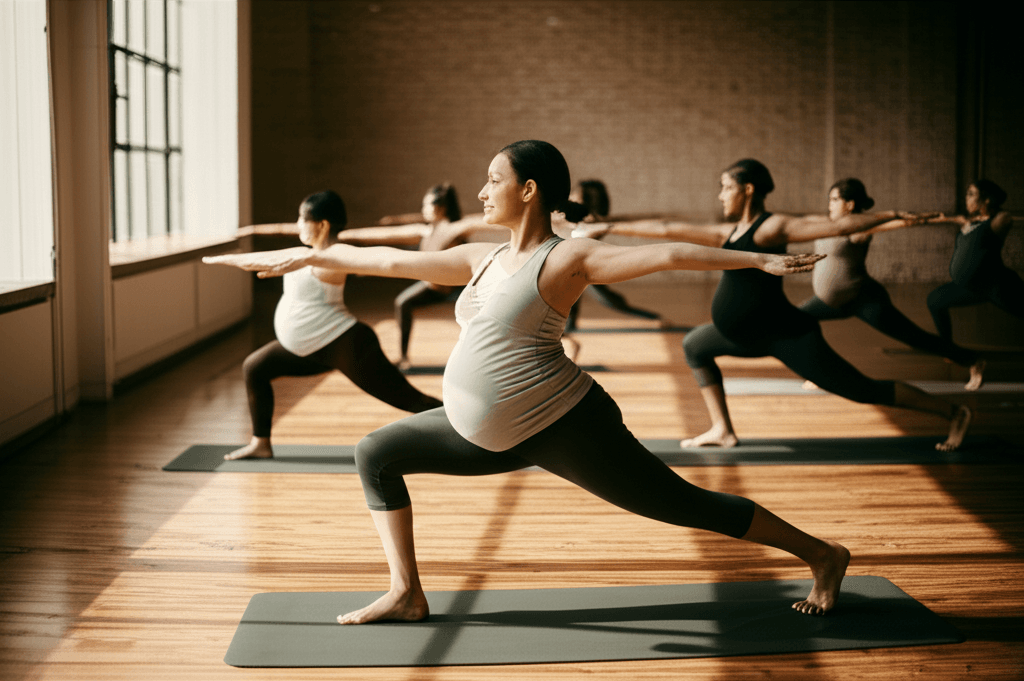
Rewiring the Mind: The Profound Mental Benefits of Pregnancy Yoga
Pregnancy yoga extends far beyond physical exercise; it is a holistic practice that profoundly impacts mental and emotional well-being, effectively “rewiring” the mind for a more serene and empowered pregnancy experience.
- Stress, Anxiety, and Depression Reduction: The combination of intentional movement, structured breathing, and meditation inherent in yoga activates the parasympathetic nervous system, helping to block stress hormones like cortisol. Studies indicate that prenatal yoga can significantly reduce symptoms of stress, anxiety, and depression during pregnancy. This reduction in distress is crucial, as chronic stress during pregnancy can have adverse effects on both mother and fetus.
- Enhanced Mind-Body Connection: Pregnancy yoga fosters a heightened awareness and deep connection between the expectant mother and her changing body, as well as with her growing baby. This practice helps to ground individuals in the present moment, promoting a serene mindset and an optimal environment for fetal development. It supports a “serene mind [that] supports a calm body,” forming an ideal space for the baby’s growth.
- Improved Sleep Quality and Mood Regulation: By reducing overall stress and promoting relaxation, prenatal yoga contributes to better sleep patterns. The mindful movements and breathwork can also help manage mood swings and promote emotional balance, offering a gentle approach to navigating the powerful emotions that can arise during pregnancy.
- Preparation for Labor and Delivery: Yoga provides tangible mental tools for childbirth. Breathing exercises learned during practice are crucial for pain management and muscle relaxation during labor. Techniques such as visualization and positive affirmations, often incorporated into prenatal yoga, can help shift mindset and build confidence in the body’s innate ability to give birth. This mental preparation can reduce fear and anxiety associated with the birthing process.
- Cultivating Self-Connection and Intuition: Through mindfulness and meditation, prenatal yoga encourages a deeper sense of self-awareness and intuition. This journey allows expectant mothers to tune into their bodily needs, manage energy levels, and foster inner clarity and confidence.
- Building a Support System: Participating in prenatal yoga classes often creates a valuable community among expectant mothers. This shared space allows women to connect, discuss experiences, and gain advice, providing a vital support network that can alleviate anxiety and make the childbirth and postpartum periods easier.
In essence, pregnancy yoga “rewires the mind” by fostering psychological resilience, enhancing coping strategies for stress, and promoting a profound sense of inner peace and connection. It empowers expectant mothers to navigate the complexities of pregnancy with grace, confidence, and a nurtured spirit.


